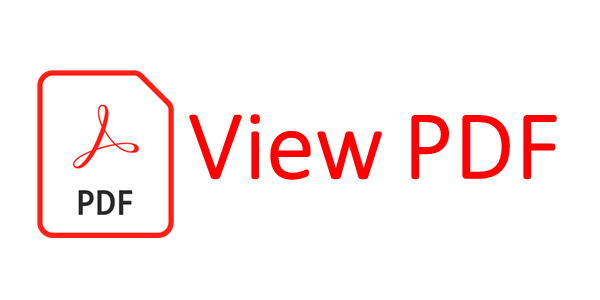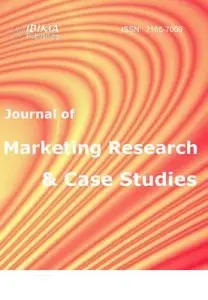Introduction
Luxury real estate has been transforming recently as it adopts climate-resilient and sustainable practices. ESG has brought a paradigm shift. Today, the luxury real estate industry is pressured to adjust to global environmental challenges. Moreover, sustainability has been a core value for developers and wealthy buyers to mitigate the ecological impact, particularly carbon emissions, resource consumption, and biodiversity loss (Raji et al., 2017). Notably, this change was driven by consumer demand and the current realities of climate change that drive cities, industries, and more to incorporate climate-conscious practices.
The luxury real estate industry faces unique challenges. The industry attempts to align with sustainable development goals, especially within ESG (Barros & Wilk, 2021; Puplampu et al., 2021; Wilkinson & Sayce, 2019). Additionally, wealthy customers’ high expectations must still be satisfied while minimizing the environmental impact task. Hence, innovative strategies and significant investment in sustainable technology are required. Despite the advancements in green engineering, energy-efficient systems, and eco-friendly materials, more research is still needed concerning the impact on climate resilience in luxury real estate. Thus, understanding the significance of these strategies and their contribution to urban sustainability is essential to determine whether luxury real estate can genuinely support climate goals’ applications (Shehata et al., 2022; Lotfabadi, 2014).
The authors intended to explore sustainable practices in luxury real estate development and assess their real-world effectiveness in decreasing carbon footprints, economizing resources, and encouraging biodiversity. Moreover, the authors intended to emphasize the clear benefits of innovations such as green building materials, energy-efficient technologies, and vertical green cities. Thus, to address these objectives, the following research questions were asked in the interview: What sustainable practices are currently implemented in luxury real estate? How effective are these practices in enhancing climate resilience? What benefits do green building materials, energy-efficient technologies, and vertical green cities bring to urban environments? These questions contributed valuable insights into the potential of sustainable luxury real estate in building climate-resilient urban landscapes.
Initial results suggested that while sustainable practices in luxury real estate significantly contributed to lowering carbon emissions and conserving resources, their general impact on urban climate resilience relied on scale and overall adoption of ESG. Besides, green building materials, energy-efficient technologies, and vertical green designs have demonstrated improvements within urban landscapes by investing in biodiversity and resource efficiency. However, the extent to which these practices impact urban planning, development, and growth standards mandates further inquiry.
Literature Review
Integrating sustainability within the real estate and urban development industry has gained academic attention, notably as urban areas face rising energy demands and environmental challenges. The literature review addresses various aspects of sustainable development, from energy-saving technologies in high-rise buildings to the psychological and economic factors that cause consumer demand for green properties. A thorough literature review of recent studies demonstrated new methods, regulatory considerations, and technology adoption trends emphasizing the complexity of achieving sustainable goals.
Energy Efficiency in High-Rise Buildings and Regulatory Challenges
Sustainability has been one of architecture’s most essential tendencies over the last twenty years (KADAEI, 2023). Besides, due to a need for urban densification and more affordable housing, for the first time, development approvals for multi-residential developments have overtaken those for individual houses (Heffernan et al., 2017). Therefore, developers made sustainability the heart of the architectural profession and contributed to adopting and enforcing sustainable strategies on the scale of urban landscapes (Stopps et al., 2021). Buildings consume 40% of global energy; high-rise buildings account for a significant proportion of the total energy used (KADAEI, 2023). Nevertheless, retrofitting existing office buildings for energy efficiency in high-rise, high-density cities, takes time and effort (Chen et al., 2024; Heffernan et al., 2017). Yet, there is a lack of thorough understanding of the challenges in office buildings’ energy retrofitting, as they have not been thoroughly explored (Chen et al.,2024).
Today, energy plays a vital role in a country’s socio-economic development (Niu,2004). Fossil fuels are one of the largest energy consumption sources worldwide, so it appears necessary to find renewable alternative energy sources or ways of reducing energy demands, especially in tall buildings, which have a great potential to use sustainable sources because of their height (Lotfabadi, 2014). Moreover, Antoniucci et al. (2015) describe how Italian urban planning regulations only minimally require energy efficiency requirements for high-rise buildings (Niu,2004), highlighting a gap between growing European Union sustainability goals and local zoning laws. Italian regulators, they argue, tend to concentrate on air pollution and environmental protection without a holistic view of urban energy use. This limited regulatory capacity contributes to a dependence on developer preference for implementing sustainable elements such as the LEED protocol, which is optional by law (Antoniucci et al., 2015; Davidson-Huxley, 2021). The authors support introducing energy reduction parameters at the urban level rather than leaving it to individual property initiatives. Furthermore, their analysis of the Empire State Building describes the cost benefits and enhanced energy efficiency achieved through retrofitting, supporting the argument that high-density urban structures are ideal for innovative grid applications (Shehata et al., 2022; Antoniucci et al., 2015; Lotfabadi, 2014).
Buildings are the dominant energy consumers in modern cities (Chen et al.,2024). High-rise residential buildings (HRBs) are consequences of fast urbanization in densely populated areas with the mission of addressing the pressure of land shortage (Davidson-Huxley, 2021). In developing countries with growing populations, cities are generally more than twice as dense as in European countries and five times denser than in America and Australia (Wang et al., 2020). Regardless, their consumption can be primarily reduced by enhancing efficiency and practical standards to lessen greenhouse gas emissions and reduce the lack of non-renewable energy resources (Raji et al., 2017).
Office buildings in high-rise high-density cities function as central business districts, contributing significantly to the city’s economic activity and energy consumption (Lotfabadi, 2014; Niu,2004; Antoniucci et al., 2015). However, the potential energy cost savings alone are only sufficient motivation to invest in improvement measures if the cost of using energy soars (KADAEI, 2023). With growing environmental concerns and sustainable development, people’s attitudes will vary, but the consequences remain insignificant (Lee, 2004).
Mathew et al. (2019) complement this view by studying energy efficiency across the real estate lifecycle. By interviewing stakeholders in the real estate sector, the authors pinpointed that significant technological gaps persist in implementing sustainable solutions during building lifecycle events, such as renovations or equipment replacements. Their results highlight stakeholders’ unwillingness to adopt unproven technologies unless they deliver cost or time advantages (Mathew et al., 2019). These insights emphasize the significance of modular readily executed solutions that can assist in reducing the initial resistance to sustainable investments (KADAEI, 2023; Shehata et al., 2022). Besides, the design of a building may be influenced by several factors such as site limitations, client demands, functional and aesthetic quality, costs, building codes, urban regulations, and, last but not least, the desire of the designer/client to reduce the environmental impact resulting from energy consumption and CO2 emissions (Raji et al., 2017).
Sustainable Urban Living examples
The COVID-19 pandemic has resumed interest in urban environments, healthy living, and the changes in urban environments that can make healthier living (D’alessandro et al., 2020; Katafygiotou et al., 2023). Today, more than 50% of the global population lives in urban areas; in Europe, the number is 75% (Jevtic et al., 2022). The interest in environmental sustainability has been growing globally due to the increased awareness of climate change (Mathew et al., 2019). Such global developments draw attention to the need for more resource-efficient and regenerative systems (Engez et al., 2021; Li et al., 2020). The identification and boundaries of the smart city are yet to be delimited; thus, the strategy for sustainable urban development has become somewhat ambiguous (Han et al., 2021; D’alessandro et al., 2020).
In a case study on The Sustainable City in Dubai, Davidson-Huxley (2021) explores the impact of sustainable urban planning on social, environmental, and financial metrics, showing that high-cost green developments can succeed if strategically designed. The city’s design integrates energy-saving features like VRF systems for HVAC and strategically placed buildings to maximize solar energy utilization (Shehata et al., 2022; Davidson-Huxley, 2021; Chen et al.,2024). However, Davidson-Huxley reports a significant obstacle to widespread adoption: the premium price tags on such development limit their accessibility, indicating that sustainable urban living remains a luxury. Nevertheless, the case study demonstrates that this development is a prototype for future eco-cities’ success.
Katafygiotou et al. (2023) studied sustainable property demand within Cyprus, emphasizing consumers’ willingness to pay a premium for eco-friendly developments. Their results indicate that consumer interest rather than regulatory requirements cause sustainable property demand, suggesting a market-driven strategy for green property development (Engez et al., 2021; Katafygiotou et al., 2023; Wang et al., 2020). They suggest raising awareness about the benefits of sustainable housing, which can improve consumer health, productivity, and long-term resilience.
Furthermore, Shin et al. (2022) studied the impact of biophilic design on consumers’ willingness to pay a premium price (WTPP), indicating that incorporating natural elements can improve outlooks on luxury in urban real estate. Through controlled experiments, the authors discovered that biophilic design elements improve the aesthetic appeal and perceived property value, though this result is context-dependent (Shin et al., 2022; Shehata et al., 2022). This result supports sustainable design’s role in improving ecological and financial value, notably in urban environments with limited natural elements.
Economic Impact of Green Features on Property Value
Climate change has started showing its impact on the environment, and the change is genuine (Bradu et al., 2022). Green infrastructure is a strategically planned network of natural and semi-natural areas with other environmental features designed and managed to deliver a wide range of ecosystem services, providing several functions and benefits through natural solutions (Liberalesso et al., 2020). Therefore, to meet the United Nations Sustainable Development Goals, green infrastructures, like green roofs and walls, can minimize these problems (Shehata et al., 2022). These greening solutions have multiple environmental, social, and economic benefits that help to enhance building performance and the surrounding urban environment (Manso et al., 2021).
Jiao et al. (2023) examined the impact of green property upgrades on single-family homes in Austin, Texas, demonstrating a substantial positive impact on housing prices. Utilizing regression models on data from 21,292 properties, they calculated an average price increase of 11.9% for homes with energy-efficient features (Li et al., 2020; Jiao et al., 2023; Manso et al., 2021). Their analysis reinforces that sustainable features can yield financial benefits for property owners and improve the appeal of green homes among prospective buyers (Zhang et al., 2022; Shehata et al., 2022). This result is consistent with other studies, such as Leskinen et al. (2020), who observed similar trends in Finland, where renewable on-site energy production improved the property value due to decreased operating costs and enhanced attractiveness (Zhang et al., 2022; Leskinen et al., 2020; Wilkinson & Sayce, 2019).
With the growing demand for green buildings worldwide, developing a new adequate research field has become necessary to create practical evaluation approaches for green building bidders (Alshboul et al., 2022). Moreover, urban densification has increased in the last decades, causing pressure on the existing infrastructures and detrimental impacts on urban environmental and social conditions (Li et al., 2020; Wilkinson & Sayce, 2019; Manso et al., 2021). Furthermore, this will guarantee that the selected bid winner has practical experience and knowledge of all the required stages, vital to finishing such projects within the required time, cost, quality, safety, and environmental aspects (Alshboul et al., 2022; Leskinen et al., 2020).
The industries and governments are working together and have come up with solutions—the Green New Deal, carbon pricing, the use of bio-based products as biopesticides in biopharmaceuticals (Zhang et al., 2022; Li et al., 2020), green building materials, bio-based membrane filters for removing pollutants, bioenergy, and biofuels—which are essential for the green recovery of world economies (Bradu et al., 2022). Moreover, the building sector consumes approximately one-third of the total final energy. It accounts for one-third of global energy-related greenhouse gas (GHG) emissions (Kumar et al., 2020; Li et al., 2020). Consumption is expected to reach 53% in the next decade because of growth in population and changes in human lifestyle with the advancement in technology and urbanization, which could further increase the GHG emissions from this sector and may lead to adverse environmental, social, and economic impacts (Puplampu et al., 2021; Kumar et al., 2020; Zhang et al., 2022).
Barros and Wilk (2021) focused on the carbon emissions of ultra-wealthy individuals, highlighting the extreme environmental impact of their expansive housing and lifestyle choices. Their study evaluated an average housing-related emission of 190 tons per year for the wealthiest 20 individuals, compared to a global average of 5 tons per capita (Barros & Wilk, 2021; Puplampu et al., 2021; Wilkinson & Sayce, 2019). This distinction highlights the need for high-end sustainable housing solutions to mitigate the outsized environmental impact of affluent lifestyles. Goldstein, Gounaridis, and Newell (2020) support this analysis with a broader demographic, discovering that wealthier households in the U.S. produce 25% more carbon emissions than their lower-income counterparts (Goldstein et al., 2020; Moreno et al., 2021).
Vertical Green Systems
Sustainable urban development minimizes pressures on the natural environment and existing urban infrastructure systems, including water, energy, and land (Puchol-Salort et al., 2021). Besides, changing planning requires clearly articulating what equity and justice mean and, more broadly, comprehending the causes of current conditions of inequality (Grabowski et al., 2023). Therefore, Rapid urban growth and high density limited green areas in urban spaces of New Cairo. Growing literature proposes that vertical gardens increase green areas with various potentials (Lotfi et al., 2020; Khan, 2020).
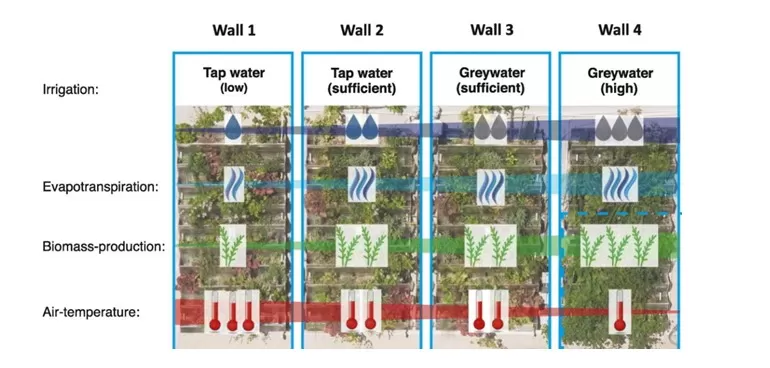
Fig 1. Vertical Green Systems (Borrowed from Pucher et al., 2022)
Furthermore, Zhao et al. (2024) reviewed the benefits of vertical green systems for urban environments, such as thermal regulation, improved air quality, and hydrological management. Their research advocates adopting greenery installations in densely populated cities to mitigate urban heat islands and improve the overall quality of life (Wilkinson & Sayce, 2019; Zhao et al., 2024; Puplampu et al., 2021). Visser (2019) delivered a case study of the Bosco Verticale in Milan, indicating how vertical forests can transform the urban landscape while providing substantial ecological and social benefits. However, Visser also warns that such developments may contribute to “eco-gentrification,” where sustainability evolves as a marketing tool for luxury properties rather than an accessible solution for all (Moreno et al., 2021; Visser, 2019; Chatterjee et al.,2020).

Fig 2. The Process for Sustainability Solutions (Developed by the Authors)
Climate-friendly urban planning plays a crucial role in climate change mitigation and adaptation and allows for sustainable development of living conditions for future generations seen in Figure 1 (Fallmann & Emeis, 2020). Thus, Wilkinson and Sayce (2019) examined the European Policy Centre’s (EPC) function in supporting sustainable real estate practices, recognizing a necessity for more potent regulatory frameworks and financial incentives. They claim that improved energy efficiency standards and stimuli could enable stakeholders to adopt sustainable practices more readily, aligning with climate goals (Wilkinson & Sayce, 2019; Moreno et al., 2021). Turner (2017) critiqued the insufficiency of legislative support for sustainable urban planning, introducing the “rigidity trap” concept that stops meaningful changes in urban design. She advocates for a coordinated approach between policymakers and private developers to foster sustainable development (Turner, 2017).
The International Energy Agency’s (2024) World Energy Outlook further underlined the urgency of decarbonizing the real estate sector to align with global emissions’ reduction goals. Projections demonstrated that, by 2050, electricity usage in buildings could exceed 50%, emphasizing the demand for aggressive energy efficiency measures and renewable energy integration (International Energy Agency, 2024). Therefore, achieving carbon neutrality by 2050 has become a global goal, sparking concerns regarding energy consumption and carbon emissions in building operations (Puplampu et al., 2021; Chen et al., 2024).
This literature review emphasized the multi-dimensional essence of sustainable real estate and urban planning. Fundamental challenges include regulatory limitations, financial constraints, and accessibility of sustainable design. However, improvements in energy-efficient technology and growing consumer demand for eco-friendly properties are promising developments. While luxury developments have pioneered sustainable practices, a concerted effort from policymakers, developers, and consumers is paramount to making sustainable urban living a mainstream reality.
Research Methodology and Findings
The authors used a qualitative research method. Moreover, the authors developed a structured interview grounded in a systematic literature review, increasing the information validity. This enabled the tagging of relevant themes and delivered a comprehensive understanding of industry practices and challenges.
Three field experts with over a decade of experience in the luxury real estate industry voluntarily participated in the study. These experts were selected for their technical knowledge and proven track records, contributing unique viewpoints that improved the depth and diversity of this research. Data were collected through ZOOM video conferencing, allowing for real-time interaction and detailed discussion. Each interview session was recorded and thereafter transcribed using Otter software, providing accuracy in grasping the expert responses and keeping the nuances of their insights.
The interview questions were strategically categorized into six sections, each addressing a core area of investigation: First, background and experience to understand each expert’s professional context; Second, industry challenges to identify critical barriers and difficulties within the field; Third, best practices to discuss effective strategies and methodologies employed by practitioners; Fourth, technological integration to explore the role of technology and digital tools in enhancing operations; Fifth, future trends gaining insights into anticipated changes and emerging trends in the industry; Lastly, personal recommendations, collecting actionable suggestions for future improvements and innovation.
Literature Review Findings
The authors conducted a systematic literature review. Based on inclusion and exclusion criteria, 42 articles were chosen for this research. Table 1 summarizes the themes and patterns identified.
Based on Table 1, integrating sustainability in real estate and urban development emphasizes significant advancement and ongoing challenges. While energy efficiency in high-rise buildings is gaining momentum, regulatory gaps and dependence on fossil fuels slow large-scale adoption of renewable sources. Consumer demand, rather than regulation, causes interest in sustainable urban living, but high costs limit accessibility, making eco-friendly properties a luxury for many. Vertical green systems, such as rooftop gardens, present environmental benefits but face issues of eco-gentrification. Green elements in properties yield financial advantages, improving property value and market appeal, yet demand further policy support to become mainstream. More robust regulatory frameworks and cooperation between policymakers and developers are essential to close the gap between luxury green developments and accessible sustainable urban living, aligning with global decarbonization goals.
Table 1. Key Patterns and Themes in Sustainable Real Estate and Urban Development
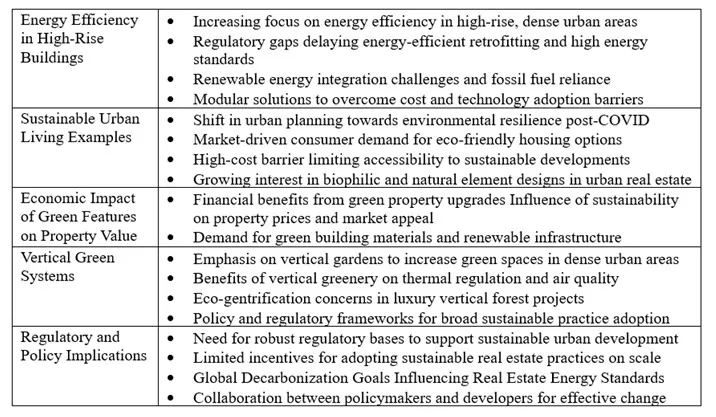
Interview Findings
The authors interviewed three experts. Table 2 emphasizes the profile of the respondents and their feedback on critical questions related to sustainability in luxury Real Estate.
The three experts brought diverse demographics, professional backgrounds, and outlooks on sustainability in luxury real estate. The authors summarize interviews into five main sections, broken into more parts in Table 2.
Age and Experience. The experts vary in age from young to older professionals (24–30, 37–42, 50+), with corresponding differences in years of real estate experience. While all have substantial exposure to the industry, their years of experience varied from 3–5 years to over a decade. This likely affected their practice and familiarity with sustainability trends.
The interpretation of professional backgrounds and years of experience contributed to each expert’s unique perspective on sustainability in luxury real estate. For instance, those with more years in the industry (10+ years) and formal sustainability or architectural training expressed higher knowledge and confidence in sustainable approaches. This emphasized the significance of education in shaping expertise and proactive engagement with sustainability, notably for complex projects like luxury properties, where client expectations and design requirements were high.
Educational Backgrounds. Their formal education backgrounds were in real estate, sustainability, and architecture. Each expert’s study area influenced their self-assessed knowledge level in sustainable building practices, with scores ranging from moderate to highly knowledgeable. Those with direct education in sustainability or architecture rated themselves higher in sustainability knowledge.
Across the board, the experts acknowledged the growing need for eco-friendly components among luxury buyers, representing a transformation in luxury consumer values toward environmentally aware choices. However, experts still needed help marketing these features, possibly due to perceived gaps in client knowledge or the premium costs associated with these features. The variety of educational strategies each expert used—whether focusing on environmental impact, cost savings, or mental well-being, the sophistication of client motivations, and the need for tailored messaging to align sustainable components with luxury values. Consequently, this aligns with the belief that luxury real estate professionals must adjust their marketing strategies to communicate the value of sustainability in ways that resonate with luxury clients. Emphasizing immediate and long-term benefits could help close the gap between client interest and willingness to invest in sustainable features.
Table 2. Expert Profiles in Sustainability in Luxury Real Estate
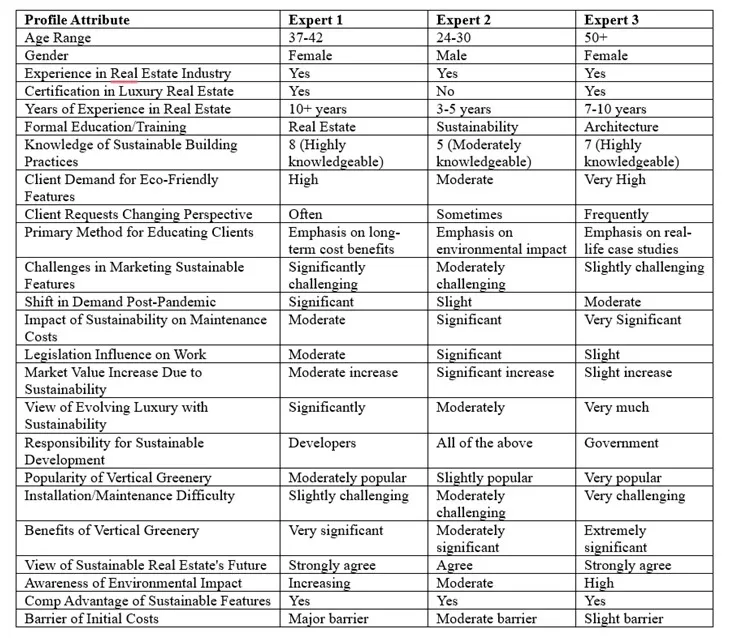
Table 3 illustrates the questions asked during the structured interview. These questions are broken down into three major areas, which offer the opportunity to gather valuable insight into addressing the research problem.
Table 3. Interview Questions
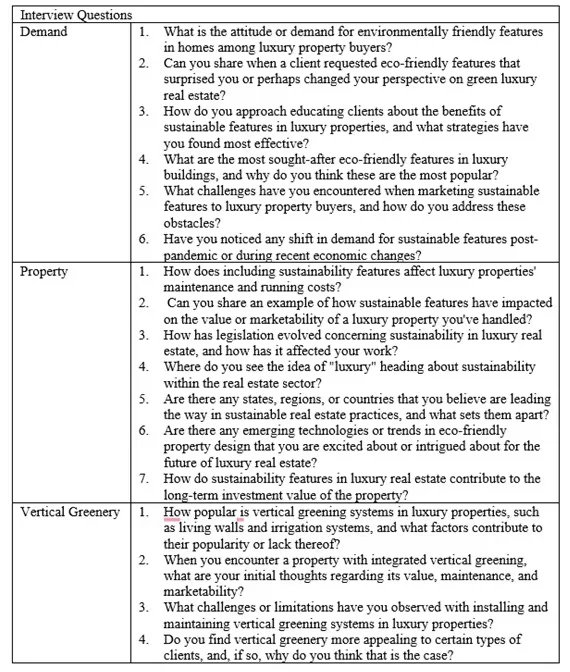
Client Demand and Marketing Challenges. All experts revealed moderate to high client demand for eco-friendly features, though they varied on how frequently these requests impact their perspectives. This indicates that demand for sustainable components is becoming normalized among luxury clients. Nevertheless, they varied in how challenging it is to market these features, with responses ranging from “slightly challenging” to “significantly challenging.” This suggested that while demand is rising, there may still be a gap in client understanding or willingness to pay a premium for sustainability. For example, one of the interviewees stated that “marketing a luxury high-rise with a vertical green facade may face challenges in communicating how its sustainability features improve both property value and long-term lifestyle benefits, mainly to buyers unfamiliar with green technologies.”
Each expert commented that the concept of “luxury” is developing to include sustainability, with those most involved in sustainability seeing this shift as more noteworthy. This evolution redefines traditional luxury, moving from an exclusive opulent focus to one that includes ethical and environmental responsibility. In this context, sustainability improves property value and moves luxury properties as symbols of social responsibility. Thus, as luxury real estate grows, sustainability evolves as a competitive differentiator, potentially drawing clients who view sustainability as part of a lifestyle choice rather than just an added feature.
Perceptions on Legislative Influence and Maintenance Costs. The experts recognized that sustainability features impact maintenance and operational costs, though their perspectives range from moderate to significant impact. Their opinions on legislative influence varied; those in regions or roles with stronger regulations perceived legislation as a significant factor, whereas others believed it was moderate to minimal. This echoed the influence of regulatory environments on operational priorities in luxury real estate. For example, while laws requiring energy-efficient building materials increase initial construction expenses, there is usually a lack of awareness about long-term savings in maintenance costs, such as reduced energy consumption and lower utility bills, creating a gap in perception that impacts decision-making.
The perceived impact of legislation on sustainability differed, suggesting regional differences in regulatory pressure or compliance requirements. For some experts, the legislation significantly impacted daily operations, pushing them to prioritize sustainable practices more than market demand alone might. For others, the regulatory impact was more moderate, allowing for flexibility in their approach to sustainability. Consequently, as legislation around sustainability strengthens, notably in the luxury sector, professionals may need to balance compliance with market demand, adjusting client expectations and regulatory mandates. This could cause more consistent adoption of sustainable practices across different regions and support sustainability as a standard rather than a differentiating feature.
Vertical Greenery. Each expert considered vertical greenery beneficial, but their perceived popularity and ease of installation differed. Some regarded it as very popular and highly beneficial. In contrast, others note challenges in installation and maintenance, indicating that, while it has aesthetic and environmental appeal, practical challenges still limit its widespread adoption. For example, the interviewee stated that including a living wall in a high-end condominium boosts property value and aligns with the growing demand for sustainable features, presenting a unique blend of luxury and environmental responsibility.
While all experts recognized the benefits of vertical greenery, mainly in improving property aesthetics and environmental impact, they identified challenges in installation and maintenance. This echoed a broader theme in sustainable luxury design: balancing innovation with practical feasibility. Vertical greenery and similar eco-friendly design trends were attractive but needed effective solutions to overcome maintenance barriers, especially in luxury properties where reliability and longevity are critical. Thus, vertical greenery’s moderate to high popularity indicated that clients are receptive to integrating natural elements in urban settings. However, luxury real estate professionals must consider practical and cost-effective solutions to implement these features without imposing excessive maintenance demands.
The profiles of these three experts demonstrated a dynamic but complicated argument for sustainability in luxury real estate. There was general agreement that client demand for sustainable features was growing, changing what it meant to be “luxurious” in the modern real estate market. However, challenges remained, especially in educating clients, managing costs, and navigating legislative frameworks. As the luxury real estate industry increasingly integrated sustainability, real estate professionals with varied expertise and innovative marketing strategies were essential for addressing client expectations and operational realities. This combination drives the future of sustainable luxury real estate, changing sustainable practices from optional enhancements into core elements of luxury property design and development.
The authors addressed the overarching relationships across the pillars. Diverse demographics affected openness and prioritization of sustainability, affecting how professionals approach sustainability within the industry. Moreover, formal training, experience, and industry knowledge highlighted strategies for client education and confidence in promoting sustainability. Furthermore, the rising demand for eco-friendly features caused the need for effective marketing and educational strategies, which experts found essential but challenging. Besides, while sustainability added value, it also presented maintenance and compliance complexities, influencing experts’ property management and valuation methods. Lastly, the growing interest in vertical greenery and similar eco-friendly trends indicated a change in luxury, where sustainability increasingly defines exclusivity and value.
The author presented the framework of implementation based on observed insights. Figure 3 illustrates the process.
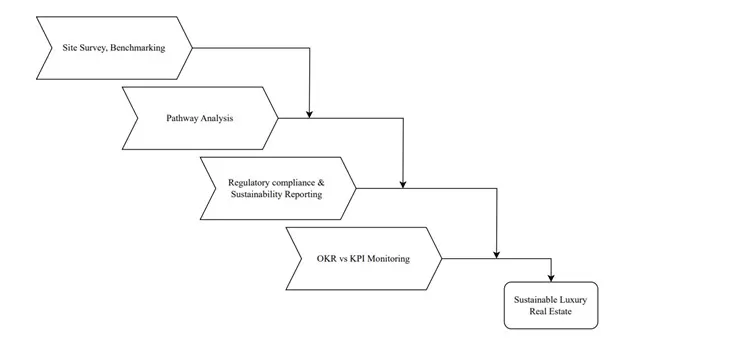
Fig 3. Implementation of Sustainable Luxury Real Estate (Developed by the Authors)
Conclusion
The movement for sustainability in architecture has evolved over the last two decades, particularly in high-rise developments, which consume significant energy due to their scale. The results also revealed that retrofitting energy efficiency in dense urban areas is complicated, and regulatory standards must usually catch up to the urgency of global sustainability goals.
The results from case studies revealed the potential of eco-friendly urban planning and emphasized cost barriers that limit widespread adoption. As awareness increases, market-driven demand for sustainable properties highlights the significance of raising consumer awareness and making sustainable urban living more accessible. Moreover, results highlighted these systems’ transformative impacts on urban landscapes, though concerns about “eco-gentrification.”
Results from experts demonstrated a positive outlook on the industry’s growing landscape. Each expert’s unique combination of demographics, professional background, and client interactions suggested insight into how sustainability is becoming integral to luxury real estate, with distinct challenges and opportunities. Experts revealed that luxury buyers’ growing demand for eco-friendly features emphasizes a shift in client values. Sustainability is now noticed as paramount to the luxury experience. However, marketing sustainable features still remains challenging, as client knowledge and willingness to pay for these innovations are still developing. The results revealed resistance.
The results revealed that legislation and cost considerations play significant roles, influencing both operational practices and client engagement strategies. Moreover, the results revealed the transition toward sustainable practices in luxury real estate, showing the growing alignment of luxury real estate with environmental, social, and governance (ESG) principles. However, the results also demonstrated that preserving luxury appeal while meeting ESG goals requires continuous innovation and investment in sustainable materials, green engineering, and energy-efficient systems, all of which must be thoroughly evaluated for long-term climate resilience and feasibility.
The authors recommend exploring consumer perceptions and willingness to invest in sustainable luxury real estate to better understand how sustainability influences buying decisions and perceived value within this sector. Comprehensive surveys should be conducted to capture quantitative and qualitative insights from potential and existing luxury property buyers. These surveys should focus on critical areas such as interest in sustainable features, perceived value of sustainability, motivations and barriers, awareness and education, and the impact of sustainability on lifestyle and brand loyalty.
Acknowledgment
A Special Thank You to Mr. Joseph Boyce, a student research assistant who contributed massively to developing the research and conducting expert interviews.
References
- Antoniucci, V., D’Alpaos, C., & Marella, G. (2015). Energy Saving in Tall Buildings: From Urban Planning Regulation to Smart Grid Building Solutions.
- Alshboul, O., Shehadeh, A., Almasabha, G., & Almuflih, A. S. (2022). Extreme gradient boosting-based machine learning approach for green building cost prediction. Sustainability, 14(11), 6651. https://doi.org/10.3390/su14116651
- Barros, B., & Wilk, R. (2021). The outsized carbon footprints of the super-rich.
- Bradu, P., Biswas, A., Nair, C., Sreevalsakumar, S., Patil, M., Kannampuzha, S., … & Gopalakrishnan, A. V. (2022). Recent advances in green technology and Industrial Revolution 4.0 for a sustainable future. Environmental science and pollution research international, 1. doi: 10.1007/s11356-022-20024-4
- Chatterjee, A., Debnath, S., & Pal, H. (2020). Implication of urban agriculture and vertical farming for future sustainability. In Urban horticulture-Necessity of the future. IntechOpen.
- Chen, L., Darko, A., Adegoriola, M. I., Chan, A. P., Yang, Y., & Tetteh, M. O. (2024). Challenges to energy retrofitting of existing office buildings in high-rise high-density cities: The case of Hong Kong. Energy and Buildings, 312, 114220. https://doi.org/10.1016/j.enbuild.2024.114220
- D’alessandro, D., Gola, M., Appolloni, L., Dettori, M., Fara, G. M., Rebecchi, A., … & Capolongo, S. (2020). COVID-19 and living space challenge. Well-being and public health recommendations for a healthy, safe, and sustainable housing. Acta Bio Medica: Atenei Parmensis, 91(9-S), 61. doi: 10.23750/abm.v91i9-S.10115
- Davidson-Huxley, C. (2021). The Future of Living: Exploring Sustainable Residential Developments Through a Case Study Analysis of The Sustainable City Dubai.
- Engez, A., Leminen, S., & Aarikka-Stenroos, L. (2021). Urban living lab as a circular economy ecosystem: Advancing environmental sustainability through economic value, material, and knowledge flows. Sustainability, 13(5), 2811. https://doi.org/10.3390/su13052811
- Fallmann, J., & Emeis, S. (2020). How to bring urban and global climate studies together with urban planning and architecture?. Developments in the Built Environment, 4, 100023. https://doi.org/10.1016/j.dibe.2020.100023
- Grabowski, Z. J., McPhearson, T., & Pickett, S. T. (2023). Transforming US urban green infrastructure planning to address equity. Landscape and Urban Planning, 229, 104591. https://doi.org/10.1016/j.landurbplan.2022.104591
- Goldstein, B., Gounaridis, D., & Newell, J. P. (2020). The carbon footprint of household energy use in the United States.
- Han, M. J. N., & Kim, M. J. (2021). A critical review of the smart city in relation to citizen adoption towards sustainable smart living. Habitat International, 108, 102312.https://doi.org/10.1016/j.habitatint.2021.102312
- Heffernan, E., Beazley, S., McCarthy, T. J., & Sohel, M. I. (2017). Energy efficiency within mid-rise residential buildings: A critical review of regulations in Australia. Energy Procedia, 121, 292-299.https://doi.org/10.1016/j.egypro.2017.08.030
- International Energy Agency. (2024). World Energy Outlook 2024.
- Jevtic, M., Matkovic, V., Paut Kusturica, M., & Bouland, C. (2022). Build healthier: post-COVID-19 urban requirements for healthy and sustainable living. Sustainability, 14(15), 9274.; https://doi.org/10.3390/su14159274
- Jiao, J., Wu, X., Chen, Y., & Farahi, A. (2023). How the single-family residence housing market capitalizes green property upgraded features: evidence from city of Austin.
- KADAEI, S. (2023). A review of limitations and future challenges in optimization of energy in sustainable high-rise buildings. Journal of Art and Architecture Studies, 12(2), 27-34. https://doi.org/10.54203/jaas.2023.4
- Katafygiotou, M., Protopapas, P., & Dimopoulos, T. (2023). How Sustainable Design and Awareness May Affect the Real Estate Market.
- Khan, M. M., Akram, M. T., Janke, R., Qadri, R. W. K., Al-Sadi, A. M., & Farooque, A. A. (2020). Urban horticulture for food secure cities through and beyond COVID-19. Sustainability, 12(22), 9592.
- Kumar, D., Alam, M., Zou, P. X., Sanjayan, J. G., & Memon, R. A. (2020). Comparative analysis of building insulation material properties and performance. Renewable and Sustainable Energy Reviews, 131, 110038. https://doi.org/10.1016/j.rser.2020.110038
- Leskinen, N., Vimpari, J., & Junnila, S. (2020). The impact of renewable on-site energy production on property values.
- Lee, W. L., & Yik, F. W. H. (2004). Regulatory and voluntary approaches for enhancing building energy efficiency. Progress in energy and combustion science, 30(5), 477-499.https://doi.org/10.1016/j.pecs.2004.03.002
- Liberalesso, T., Cruz, C. O., Silva, C. M., & Manso, M. (2020). Green infrastructure and public policies: An international review of green roofs and green walls incentives. Land use policy, 96, 104693.https://doi.org/10.1016/j.landusepol.2020.104693
- Li, L., Collins, A. M., Cheshmehzangi, A., & Chan, F. K. S. (2020). Identifying enablers and barriers to the implementation of the Green Infrastructure for urban flood management: A comparative analysis of the UK and China. Urban forestry & urban greening, 54, 126770.https://doi.org/10.1016/j.ufug.2020.126770
- Lotfabadi, P. (2014). High-rise buildings and environmental factors. Renewable and Sustainable Energy Reviews, 38, 285-295.https://doi.org/10.1016/j.rser.2014.05.024
- Lotfi, Y. A., Refaat, M., El Attar, M., & Salam, A. A. (2020). Vertical gardens as a restorative tool in urban spaces of New Cairo. Ain Shams Engineering Journal, 11(3), 839-848. https://doi.org/10.1016/j.asej.2019.12.004
- Manso, M., Teotónio, I., Silva, C. M., & Cruz, C. O. (2021). Green roof and green wall benefits and costs: A review of the quantitative evidence. Renewable and Sustainable Energy Reviews, 135, 110111.https://doi.org/10.1016/j.rser.2020.110111
- Mathew, P., Coleman, P., Page, J., et al. (2019). Energy Efficiency and the Real Estate Lifecycle: Stakeholder Perspectives.
- Moreno, C., Allam, Z., Chabaud, D., Gall, C., & Pratlong, F. (2021). Introducing the “15-Minute City”: Sustainability, resilience and place identity in future post-pandemic cities. Smart cities, 4(1), 93-111.https://doi.org/10.3390/smartcities4010006
- Niu, J. (2004). Some significant environmental issues in high-rise residential building design in urban areas. Energy and buildings, 36(12), 1259-1263.https://doi.org/10.1016/j.enbuild.2003.07.005
- Puchol-Salort, P., O’Keeffe, J., van Reeuwijk, M., & Mijic, A. (2021). An urban planning sustainability framework: Systems approach to blue green urban design. Sustainable Cities and Society, 66, 102677. https://doi.org/10.1016/j.scs.2020.102677
- Puplampu, D. A., & Boafo, Y. A. (2021). Exploring the impacts of urban expansion on green spaces availability and delivery of ecosystem services in the Accra metropolis. Environmental Challenges, 5, 100283.https://doi.org/10.1016/j.envc.2021.100283
- Raji, B., Tenpierik, M. J., & Van den Dobbelsteen, A. (2017). Early-stage design considerations for the energy-efficiency of high-rise office buildings. Sustainability, 9(4), 623. https://doi.org/10.1016/j.egypro.2017.08.030
- Shehata, N., Mohamed, O. A., Sayed, E. T., Abdelkareem, M. A., & Olabi, A. G. (2022). Geopolymer concrete as green building materials: Recent applications, sustainable development and circular economy potentials. Science of the Total Environment, 836, 155577.
- Shin, M., Lee, R. H., Min, J. E., & Legendre, T. S. (2022). Connecting nature with luxury service.
- Stopps, H., Thorneycroft, C., Touchie, M. F., Zimmermann, N., Hamilton, I., & Kesik, T. (2021). High-rise residential building makeovers: Improving renovation quality in the United Kingdom and Canada through systemic analysis. Energy Research & Social Science, 77, 102085.https://doi.org/10.1016/j.erss.2021.102085
- Turner, V. K. (2017). Obstacles to developing sustainable cities: the real estate rigidity trap.
- Visser, M. (2019). The geography of vertical forests: Exploring the green city.
- Wang, Y., Mauree, D., Sun, Q., Lin, H., Scartezzini, J. L., & Wennersten, R. (2020). A review of approaches to low-carbon transition of high-rise residential buildings in China. Renewable and Sustainable Energy Reviews, 131, 109990. https://doi.org/10.1016/j.rser.2020.109990
- Wilkinson, S. J., & Sayce, S. (2019). Decarbonising Real Estate: The Evolving Relationship Between Energy Efficiency and Housing in Europe.
- Zhang, L., Huang, F., Lu, L., Ni, X., & Iqbal, S. (2022). Energy financing for energy retrofit in COVID-19: recommendations for green bond financing. Environmental science and pollution research international, 29(16), 23105. doi: 10.1007/s11356-021-17440-3


